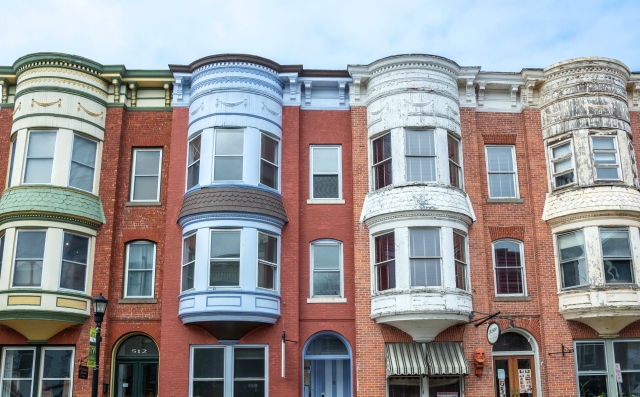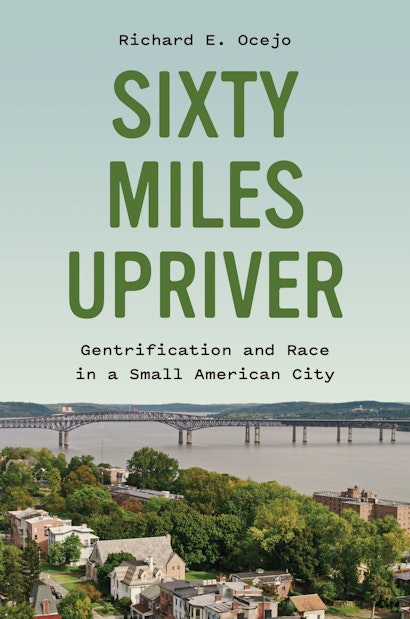One of the many trends that made headlines during the Covid-19 pandemic was people moving from large, dense cities to smaller cities, towns, and even rural areas, bypassing the suburbs. This pattern had been happening prior to 2020, of course. It accelerated during the time of lockdowns and school and office closures. People with financial means and work flexibility are the most likely to make such a move. If working-from-home was going to be the new normal, why not avoid the big city’s expensive real estate and get more space and access to nature, the thinking goes. Many in the middle class have picked up and left, while the wealthy are able to buy second homes, if they want, for lifestyle flexibility.
The story of this pattern that has become most prominent since the pandemic is the fate of large cities. The “urban doom loop” of declining downtowns and shrinking tax revenue take up a lot of oxygen. The places that don’t get as much attention are the ones that have been receiving newcomers from large cities in noticeable numbers. Small municipalities and rural towns have faced the opposite issue from large cities: instead of the fear of decline, they are experiencing a sudden resurgence of new residents, businesses, development, and investment. In many cases, this influx has revived downtowns and Main Streets that were struggling for many decades. While these sound like positive additions at first glance, even success has consequences.
It’s almost paradoxical that places with small populations don’t get much attention in the national media or in academic research, especially when compared to metropolises. Quite simply, there are a lot more small places than large ones. Out of the approximately 20,000 incorporated places in the United States, only 311 have more than 100,000 residents, while 52% of people who live in an incorporated “city” do so in one with fewer than 250,000 residents. Yet, small places face many of the same issues that large ones do, including economic and population declines.
When middle-class and wealthy urbanites leave large cities for smaller ones on urban peripheries or in rural hinterlands, they often encounter places that have seen better days. Economic shifts like the decline of manufacturing, regulations on extraction industries like logging, mining, and fishing, and the rise of large-scale agribusinesses have reshaped everyday life and life outcomes for people in small towns and rural areas. Since the late twentieth century, many of these places have seen major and independent businesses close, housing deteriorate, and young residents leave for better opportunities elsewhere, particularly in large cities. But the fortunes of some have shifted in the twenty-first century. International migration, especially from Latin America, has played an important role in rejuvenating them. So has the arrival of big city urbanites in search of affordable real estate, greener locales, and opportunities to be difference-makers in their communities.
Given their recent histories, it would seem like this influx would be universally well-received by the people who call these small places home. There is a degree of pride that emerges from living in a place that is facing long odds. To many lifelong and longtime residents, newcomers and new businesses filling empty spaces are signs of growth and hope for their much-loved hometowns. Problems can arise, however, when there are resource imbalances and social differences between the new arrivers and the awaiting inhabitants.
Gentrification is the process of people in the middle- and upper-middle-class moving into a lower-income place and preparing it for increasingly wealthier residents, businesses, and investors. In other words, it’s when a place that has been disinvested receives sudden and sustained reinvestment. The process fascinates because it runs counter the more established pattern of people with choices for where to live deciding to live among people in their own social class. In recent decades the term has entered into public discourse and debate around neighborhood change and is the subject of media stories, novels, and television programs. What makes gentrification such a popular and stimulating topic is its inherent controversy: the process both promises to bring benefits to local people and places that have been struggling and puts those same people at risk of being displaced in some form. We usually speak about residential displacement when it comes to those risks, but they also refer to “everyday” displacement, like the impacts of neighbors being forced to move and businesses having to close.
We also usually speak about gentrification as something that happens in neighborhoods in big cities. These are the cases we hear about most often, and it’s true that the process originated and certainly still occurs in metropolises. But as the examples of major changes in smaller, disinvested municipalities make clear, gentrification can unfold anywhere we see a sustained influx of residents who are wealthier than much of a place’s existing population. This includes the small cities and towns and countrysides that have gotten the attention of migrating urbanites with the resources to make tangible investments.
Most interestingly, gentrification is distinct in these places compared to large cities in a few ways. First, newcomers to small municipalities tend to be property and business owners instead of renters and employees. This is because they are usually older and more established in their careers, and the places they move to have much more affordable real estate. Ownership both protects this group from being displaced and gives them greater power to make a difference in the built environment, such as by renovating housing for an upmarket clientele and opening up new businesses that cater to their own tastes.
A second distinction is that once they settle into their new home newcomers find that they can make a difference by getting involved and being active politically and civically in local government and the community. Feeling rooted in place and the smaller scale of these municipalities are key factors in this difference. By getting involved, newcomers can end up shifting political agendas and civic foci away from the needs of existing residents, who are more likely to be lower-income, and toward their own needs and preferences, which most often revolve around real estate and nurturing their investments. Related, newcomers can establish formal and informal partnerships with those lifelong and longtime residents who are not low-income and have been trying to revitalize their hometowns for many years to aid a gentrification process along. In large cities, newcomers to a gentrifying neighborhood can at best help transform a few of its blocks, have minimal impacts at the city level, and have few if any connections to local residents who share their interests. In smaller places, they can make a much greater impact on these fronts.
As it always is when discussing gentrification, the question becomes what the long-term effects the process will have on those vulnerable residents in these small and rural places who are at risk of displacement once revitalization sets in. These inhabitants, as a group, tend to lack many housing alternatives. As this migration pattern continues and we see more and more interest in disinvested, forgotten small places, we will need to change the story from one of restoration to one of caution and concern.
Richard E. Ocejo is professor of sociology at John Jay College and the Graduate Center, City University of New York. He is the author of Masters of Craft: Old Jobs in the New Urban Economy and Upscaling Downtown: From Bowery Saloons to Cocktail Bars in New York City (both Princeton).

